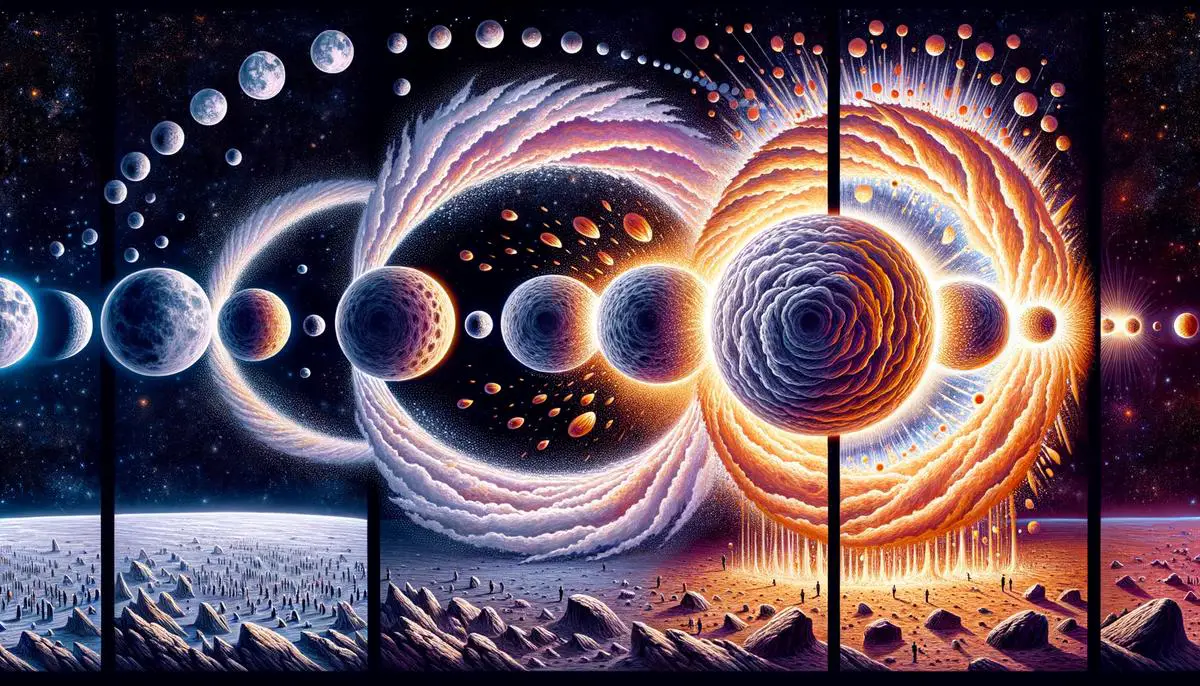Lunar Asymmetry and the Big Splat Theory
The moon's uneven sides have puzzled scientists, but Erik Asphaug proposes an intriguing explanation called the "Big Splat." This theory suggests that Earth once had two moons, with a smaller companion moon crashing into the larger one millions of years ago. This collision could have spread material across the lunar far side, creating its rugged terrain that contrasts with the side we always see.
Asphaug and his colleagues at the University of California found existing theories inadequate to explain the moon's curious asymmetry. The far side's immense gray highlands differ from the near side's dark plains of frozen lava, called maria. Asphaug wondered why Earth's gravity hadn't balanced these features over billions of years.
In collaboration with post-doc Martin Jutzi, they developed a new model proposing a slow collision of moons, which Asphaug calls a "splat." This gradual impact might have added a layer of varying density to the far side, creating the lopsided moon we see today.
Matija Cuk proposed a complementary theory suggesting a second point of lunar balance in our solar neighborhood. If Cuk's mini-moon lost its stability due to gravitational influences, it might have slowly fallen towards the larger moon, eventually covering it with cosmic debris.
While these ideas lack definitive proof, they offer compelling explanations for the moon's asymmetry and hint at a history of planetary drama in our solar system's formation.
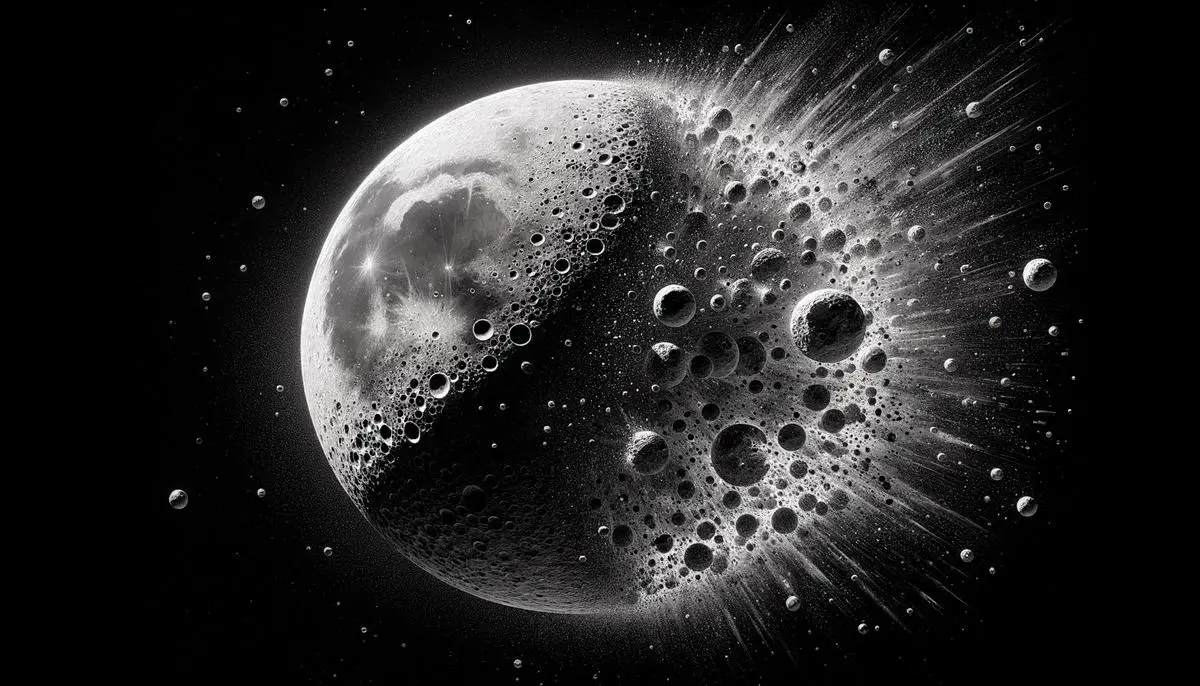
Giant Impact Hypothesis and Its Limitations
The Giant Impact Hypothesis proposes that a Mars-sized body, known as Theia, collided with a young Earth over 4.4 billion years ago, forming our moon from the resulting debris. This theory elegantly explains the moon's existence and the Earth-moon system's angular momentum. However, it faces challenges:
- Isotopic similarity: The moon and Earth share nearly identical isotopic signatures, particularly oxygen isotopes, suggesting a shared origin. This similarity is difficult to explain if the moon were primarily made from Theia's remains.
- Lack of volatiles: The moon's scarcity of volatile elements, which are found abundantly on Earth, adds to the mystery. While the Giant Impact should have removed these elements, the extent of this process remains debated.
These limitations have led researchers to explore new ideas, seeking answers to the enigmas surrounding our celestial companion. The ongoing quest for understanding drives scientists to look deeper and wider, revealing more about the moon's captivating history with each new discovery.

Synestia Theory and Moon Formation
The synestia theory offers a new perspective on lunar origins, suggesting that both the moon and Earth emerged from a swirling cloud of molten rock. This massive, spinning ring of vaporized material, created by a colossal impact between a proto-Earth and another large celestial body, formed the lunar nebula.
As the planetary ring cooled and shrank, condensed molten rock began to gather near its center, falling like rain and feeding what would become the moon. This process continued until the moon formed as a young, round orb.
The synestia theory helps explain the remarkable compositional similarity, yet intriguing differences, between the moon and Earth:
- Shared chemical signatures suggest a common origin within the same synestial forge.
- The moon's extreme dryness is explained by temperatures of 4,000 to 6,000 degrees Fahrenheit, which would have eliminated any volatiles.
This theory allows for a variety of collision angles, making the moon's creation more plausible by eliminating the need for specific impact conditions required by the Giant Impact hypothesis. While not definitive, it presents a flexible view of cosmic events and adds another chapter to the complex story of celestial creation.
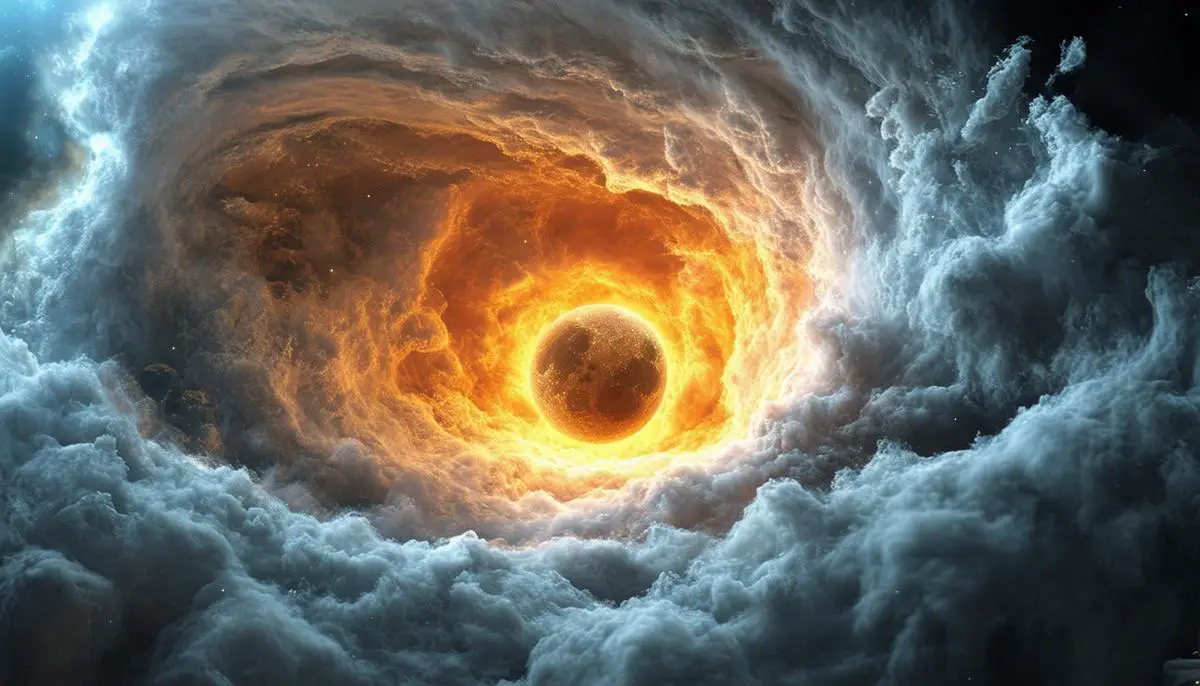
Temporary Mini-Moons and Gravitational Capture
Earth occasionally hosts temporary mini-moons, small satellites briefly caught in its gravitational embrace before continuing their cosmic journeys. This phenomenon showcases the fascinating mechanics of gravitational capture.
Asteroid 2024 PT5 exemplifies these temporary companions. Captured for just a couple of months, it doesn't complete a full orbit around Earth, acting more like a passerby in our planetary neighborhood. These short-term gravitational encounters occur several times every decade, with longer capture episodes happening perhaps every twenty years.
"The object that is going to pay us a visit belongs to the Arjuna asteroid belt, a secondary asteroid belt made of space rocks that follow orbits very similar to that of Earth at an average distance to the sun of about 93 million miles (150 million kilometers)," explains Carlos de la Fuente Marcos, professor at Universidad Complutense de Madrid.
These transient mini-moons serve as natural laboratories for scientists studying Earth's gravitational interactions. By observing these temporary satellites, astrophysicists gain insights into the dynamics of gravitational entrapment and release—processes crucial to understanding the broader celestial mechanics governing our solar system.
As they come and go, these temporary mini-moons demonstrate the complex interplay of forces guiding celestial bodies through their stellar paths, offering glimpses into the vast spatial expanse and the ever-present gravitational attractions that connect the universe.
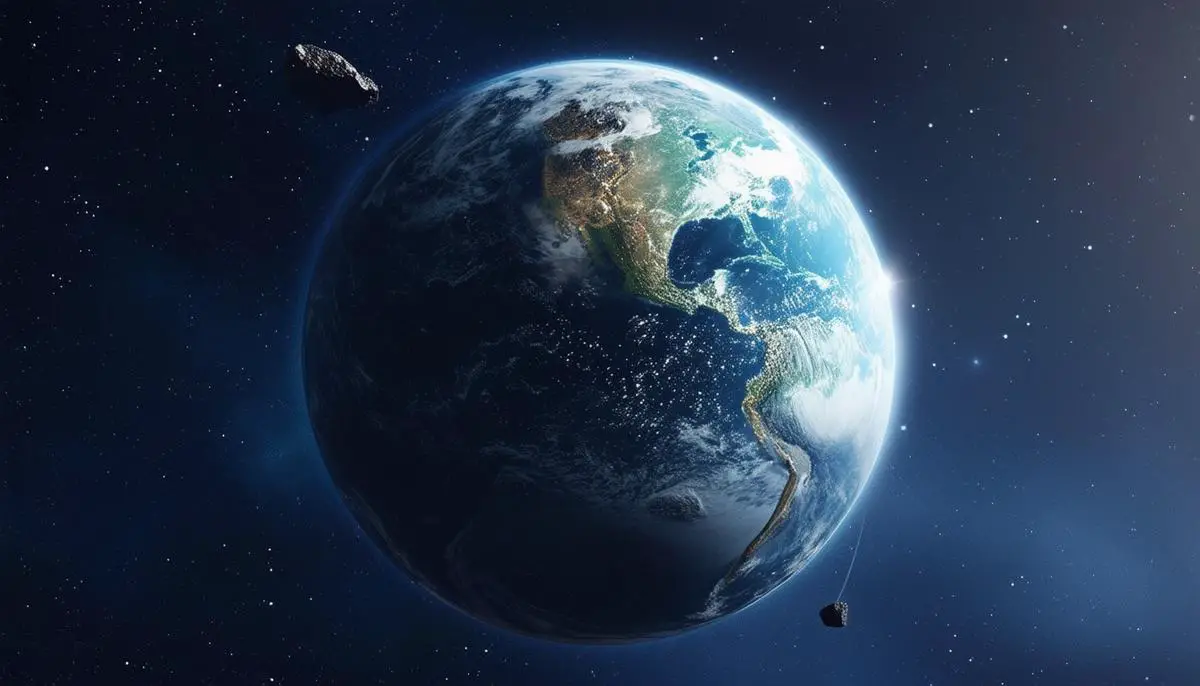
Double Impact Theory and Planetary Formation
The double impact theory proposes that the moon's creation involved two cataclysmic collisions, contributing to the harmonization of Earth and its lunar companion. This scenario suggests that Theia, a Mars-sized body, didn't simply collide with our young Earth once before departing. Instead, it involves:
- A rapid hit-and-run encounter, scattering debris but leaving both bodies mostly intact.
- A slower, more deliberate second collision that fused their materials together.
This theory highlights planetary formation as a process of repetitive collisions that shaped Earth's current identity. It provides nuance to our understanding of the near-identical isotopic profiles between Earth and moon, suggesting a shared heritage created through two cosmic impacts.
The double impact theory extends beyond our moon, informing models of planetary formation across the cosmos. It proposes a universe where planets are shaped through a series of monumental impacts, each contributing to the grand tale of formation.
By exploring such possibilities, we gain insight into how worlds collide and coalesce, painting a broader picture of our early celestial neighborhood and the processes that continue to shape our universe.
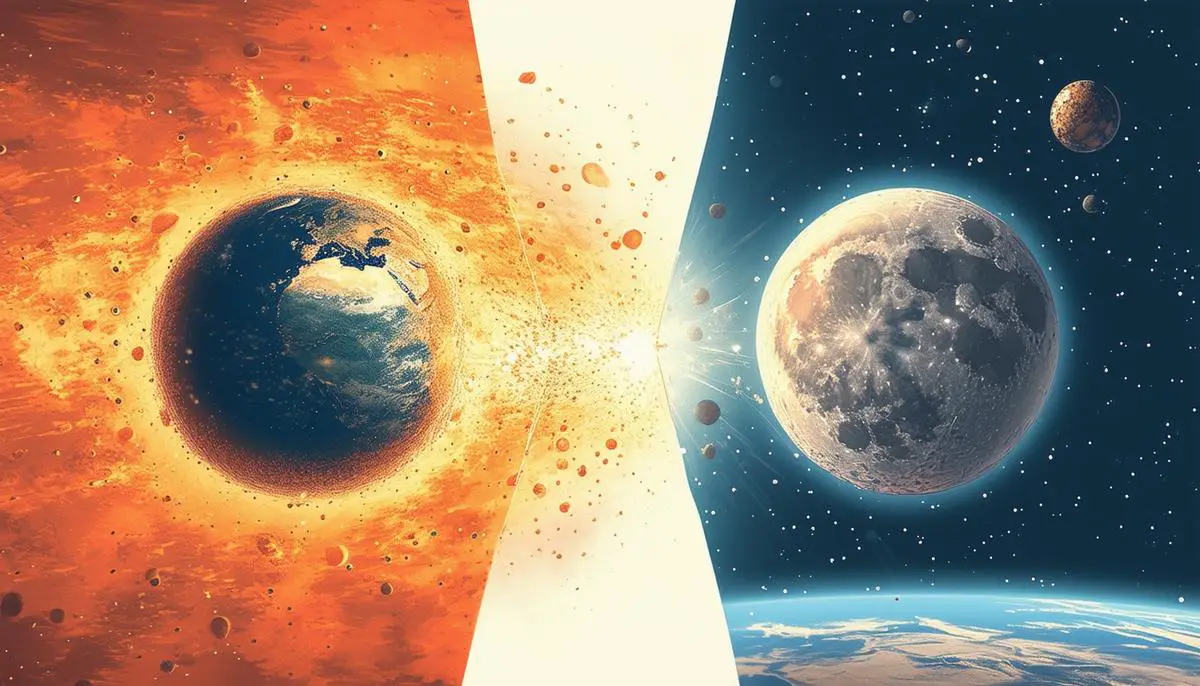
As we continue to unravel the mysteries of lunar formation, each theory enriches our understanding of this enigmatic satellite. Whether through multiple impacts, a swirling synestia, or gravitational capture, these models showcase the intricate interplay of celestial forces shaping our universe. Our ongoing exploration encourages us to look beyond, appreciating the cosmic dance unfolding above and the profound connections that bind celestial bodies together.
- Asphaug E, Jutzi M. The Moon's thin crust as evidence for an early hot Moon. Nature. 2011;476(7358):69-72.
- Lock SJ, Stewart ST. The structure of terrestrial bodies: Impact heating, corotation limits, and synestias. J Geophys Res Planets. 2017;122(5):950-982.
- de la Fuente Marcos C, de la Fuente Marcos R. Asteroid 2024 PT5 as a transient mini-moon of Earth. Res Notes AAS. 2024;8(1):1.
- Emsenhuber A, Asphaug E. Fate of the runner in hit-and-run collisions. Astrophys J. 2019;875(2):95.
![]()
